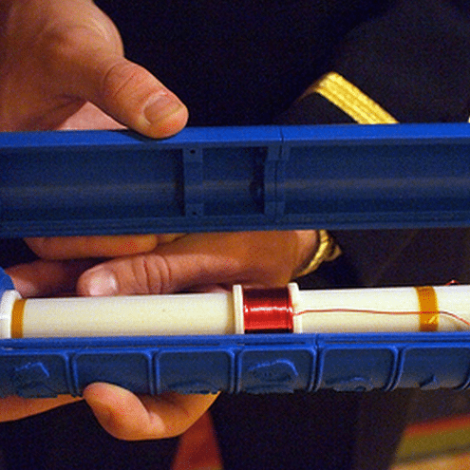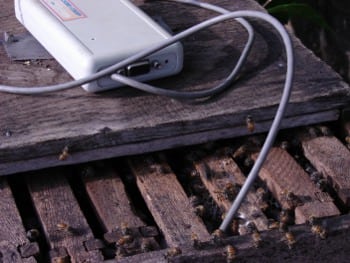This innovation is one of our Promising Prototypes of IEEE’s Global Humanitarian Technology Conference in Seattle Oct. 30 – Nov 1. For more in the series, please see below.
Farmers in developing countries can make more money from a shrimp farm on a small plot of land than they can from growing rice. About three or four times as much. Since the mid 1980s, shrimp production has caught on in the developing world, increasing 10-fold to 1.5 million metric tons in 2010. It’s a $6.9 billion industry, and farmers who earn less than a dollar per day are taking part.
Unfortunately, the small-plot shrimpers don’t achieve the same yields as commercial operations. Variations in salinity levels harm their shrimp and cap their yields. They can haul in about 500kg per acre, compared to 1500kg to 3000kg per acre in commercial farms. If they know that there’s a problem, farmers can adjust the salinity level in the water. And shrimp can withstand fluctuations in water quality for about a day without suffering damage. Salinity sensors, however, cost from $100 to $2000 or more, which small-plot farmers can’t afford.
Stephen Honan, a student at the US Naval Academy in Annapolis, Maryland, saw the problem first hand at shrimp farms in Bangladesh. He and his team designed the sensor shown that costs $5.29 in materials, and could retail at less than $9. Local technicians can assemble it themselves. The farmer charges it by shaking it, there’s a magnet and a solenoid inside. After testing the water, an LCD display shows the farmer a picture of what action to take. Honan learned that less than half of the farmers are literate, so the graphic readout made sense.
So far, Honan and his team have put the sensor through 50 trials, and they plan to make some changes to the layout and ergonomics before taking it to market. Probably most importantly, however, they plan to study how farmers learn to use the device. They’ll eventually incorporate users’ feedback into their training recommendations.


Hi,
We are interested in learning more about this product and if it is commercially available now.
We have a large project for remote monitoring shrimp farms in Ecuador, LATAM
Could you please put us in contact with the inventors.
Thanks,
Juan Francisco Jaramillo
Business Development Manager
DIGITEC SA
http://www.digitec.com.ec
Email: juan_jaramillo@digitec.com.ec
CEl:+593990521263